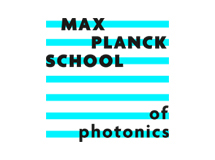
Dirk Englund - Programming Complexity: Large-Scale Photonics for Quantum Information and Machine Learning
Virtual Lecture
Lecture available on YouTube
Abstract:
After several decades of intensive theoretical and experimental efforts, the field of quantum information processing at a critical moment: special-purpose quantum information processors are at or past the “quantum complexity frontier” where classical computers can no longer predict their outputs: we can “program complexity”, unable to predict the outcome. Meanwhile, new technologies to connect quantum processors by photons give rise to quantum networks with functions impossible on today’s “classical-physics” internet. However, to harness the power of quantum complexity in “noisy intermediate-scale” quantum computers and networks requires advanced methods in quantum control and noise mitigation - perhaps to the ultimate goal of fault tolerant computing. This talk discusses one approach in that direction: large-scale programmable photonic integrated circuits [1,2] (PICs) designed to control photons and atomic or atom-like quantum memories [3–8]. The second part of the talk considers another “complexity frontier”: that encountered in machine learning and signal processing when trying to process exponentially growing quantities of data. These problems present new opportunities at the intersection with quantum information technologies - specifically, we will consider new directions for processing classical and quantum information in deep learning neural networks architectures [9–13].
References:
[1] W. Bogaerts, D. Pérez, J. Capmany, D. A. B. Miller, J. Poon, D. Englund, F. Morichetti, and A. Melloni, Programmable Photonic Circuits, Nature 586, 207 (2020).
[2] N. C. Harris, J. Carolan, D. Bunandar, M. Prabhu, M. Hochberg, T. Baehr-Jones, M. L. Fanto, A. Matthew Smith, C. C. Tison, P. M. Alsing, and D. Englund, Linear Programmable Nanophotonic Processors , Optica, OPTICA 5, 1623 (2018).
[3] N. H. Wan, T.-J. Lu, K. C. Chen, M. P. Walsh, M. E. Trusheim, L. De Santis, E. A. Bersin, I. B. Harris, S. L.Mouradian, I. R. Christen, E. S. Bielejec, and D. Englund, Large-Scale Integration of Artificial Atoms in Hybrid Photonic Circuits, Nature 583, 226 (2020).
[4] H. Choi, M. Pant, S. Guha, and D. Englund, Percolation-Based Architecture for Cluster State Creation Using Photon-Mediated Entanglement between Atomic Memories , NPJ Quantum Information 5 , 104 (2019).
[5] J. Carolan, M. Mohseni, J. P. Olson, M. Prabhu, C. Chen, D. Bunandar, M. Y. Niu, N. C. Harris, F. N. C.Wong, M. Hochberg, S. Lloyd, and D. Englund, Variational Quantum Unsampling on a Quantum Photonic Processor, Nature Physics (2020).
[6] G.-H. Lee, D. K. Efetov, W. Jung, L. Ranzani, E. D. Walsh, T. A. Ohki, T. Taniguchi, K. Watanabe, P. Kim, D.Englund, and K. C. Fong, Graphene-Based Josephson Junction Microwave Bolometer, Nature 586, 42 (2020).
[7] T. Neuman, M. Eichenfield, M. Trusheim, L. Hackett, P. Narang, and D. Englund, A Phononic Bus for Coherent Interfaces Between a Superconducting Quantum Processor, Spin Memory, and Photonic QuantumNetworks, arxiv.org/abs/2003.08383 (2020).
[8] S. Krastanov, M. Heuck, J. H. Shapiro, P. Narang, D. R. Englund, and K. Jacobs, Room-Temperature Photonic Logical Qubits via Second-Order Nonlinearities, arxiv.org/abs/2002.07193. To appear in Nature Comm
[9] Y. Shen, N. C. Harris, S. Skirlo, M. Prabhu, T. Baehr-Jones, M. Hochberg, X. Sun, S. Zhao, H. Larochelle, D.Englund, and M. Soljačić, Deep Learning with Coherent Nanophotonic Circuits, Nat. Photonics 11, 441 (2017).
[10] R. Hamerly, L. Bernstein, A. Sludds, M. Soljačić, and D. Englund, Large-Scale Optical Neural Networks Based on Photoelectric Multiplication, Phys. Rev. X 9, 021032 (2019).
[11] Gordon Wetzstein, Aydogan Ozcan, Sylvain Gigan, Shanhui Fan, Dirk Englund, Marin Soljačić, Cornelia Denz, David A. B. Miller, Demetri Psaltis, Inference in Artificial Intelligence with Deep Optics and Photonics, To Appear in Nature (2020).
[12] M. Prabhu, C. Roques-Carmes, Y. Shen, N. Harris, L. Jing, J. Carolan, R. Hamerly, T. Baehr-Jones, M.Hochberg, V. Čeperić, J. D. Joannopoulos, D. R. Englund, and M. Soljačić, Accelerating Recurrent Ising Machines in Photonic Integrated Circuits, Optica, OPTICA 7, 551 (2020).
[13] L. Bernstein, A. Sludds, R. Hamerly, V. Sze, J. Emer, and D. Englund, Freely Scalable and Reconfigurable Optical Hardware for Deep Learning, arxiv.org/abs/2006.13926 (2020).
Biography:
Dirk Englund received his BS in Physics from Caltech in 2002. After a Fulbright fellowship at T.U. Eindhoven, he completed an MS in Electrical Engineering and a PhD in Applied Physics at Stanford University in 2008. After a postdoctoral fellowship at Harvard University, he joined Columbia University as Assistant Professor of E.E. and of Applied Physics. He joined the MIT EECS faculty in 2013. Major recognitions include the 2011 Presidential Early Career Award in Science and Engineering, the 2011 Sloan Fellowship in Physics, the OSA's 2017 Adolph Lomb Medal, the Bose Research Fellowship in 2018, and a Humboldt Research Fellowship in 2020.





